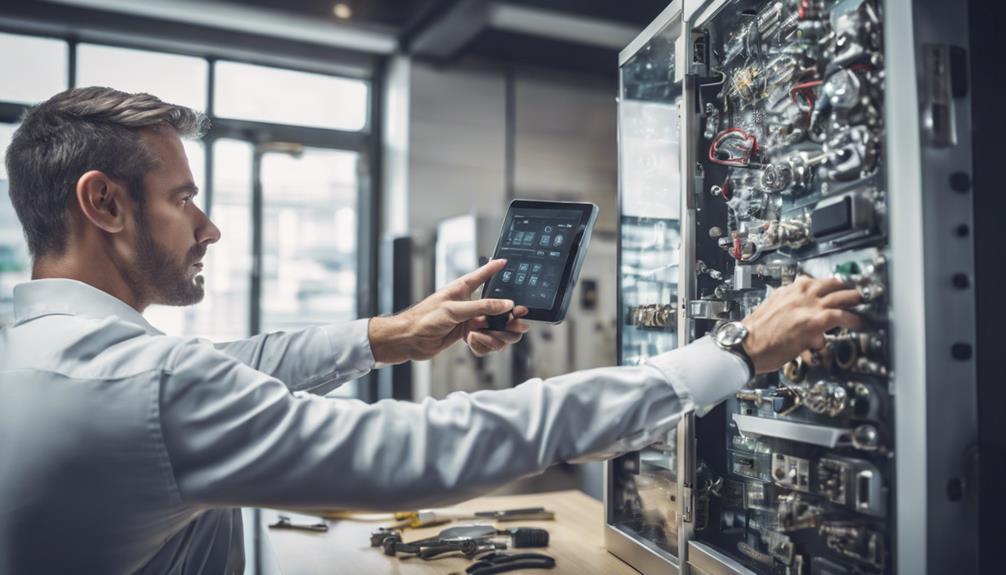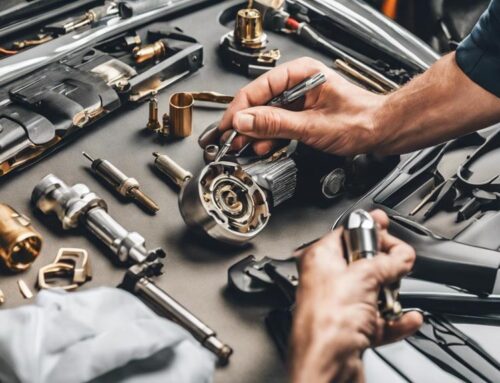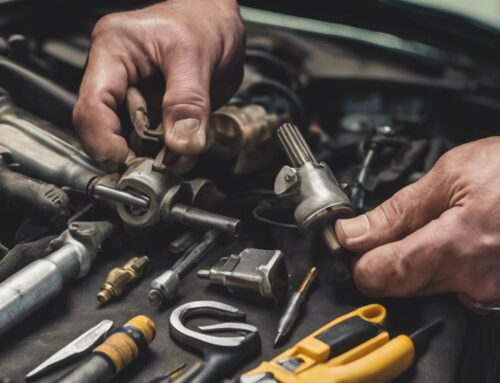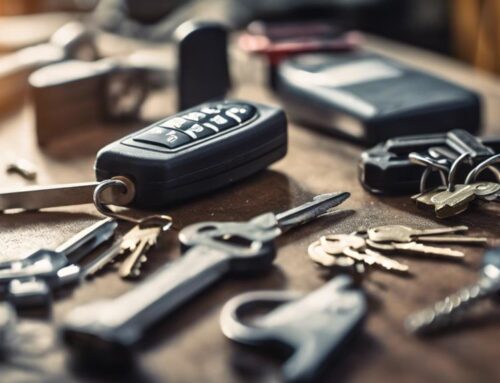When it comes to enhancing your business's security, you might wonder if a locksmith can truly upgrade, repair, or integrate your existing system with new technology. The answer is yes, but it involves more than just swapping out locks. A skilled locksmith can assess your current setup, identify vulnerabilities, and recommend advanced solutions that fit seamlessly into your infrastructure. However, there are critical considerations to keep in mind, especially regarding compatibility and the latest security trends. What should you look for in a locksmith to guarantee your upgrades are effective and reliable?
Key Takeaways
- Locksmiths can assess existing security systems for vulnerabilities and recommend necessary upgrades to enhance protection against threats.
- They are equipped to repair damaged components, ensuring that security systems function optimally and securely.
- Many locksmiths specialize in integrating new technology, such as smart locks and surveillance systems, with current setups for improved security.
- They can provide tailored solutions based on the specific needs of a business, ensuring compatibility and effectiveness of new security technologies.
- Regular consultations with locksmiths can ensure ongoing maintenance and updates, keeping security systems current with evolving technology trends.
Understanding Security System Needs
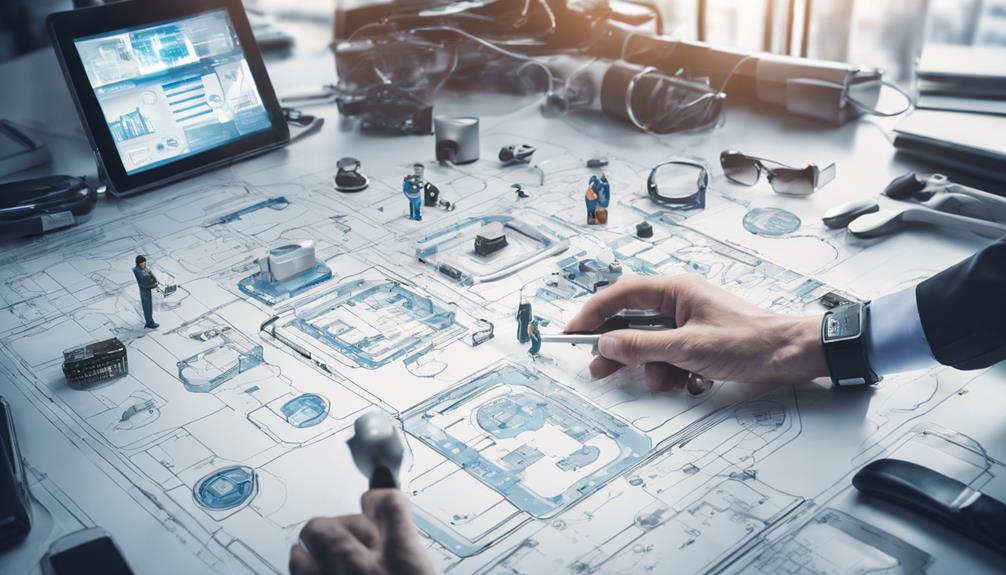
When evaluating your security system needs, it is crucial to assess the specific vulnerabilities your property may face. Identify potential threats, such as unauthorized access, theft, or damage, and understand how these risks evolve with security trends. You need to stay proactive; technology advancements are rapidly changing the landscape of security solutions. For instance, consider integrating smart locks, surveillance systems, and advanced alarm features. These innovations not only enhance security but also provide real-time monitoring capabilities that empower you to respond swiftly to incidents. By aligning your security strategy with current trends and technology, you can greatly mitigate risks and assert control over your environment, ultimately fostering a safer, more secure space for your operations. Additionally, incorporating customization options tailored to your business's unique needs can further enhance the effectiveness of your security system.
Assessing Current Security Systems
A thorough assessment of your current security systems is essential to guarantee they effectively counteract potential threats. Conducting a detailed system analysis and security evaluation allows you to identify weaknesses and areas for improvement. Focus on these key aspects:
- Access Control: Evaluate the effectiveness of your locks, keycards, or biometric systems.
- Surveillance: Assess the placement and functionality of cameras, ensuring they cover all critical areas.
- Alarm Systems: Review your alarm's response time and integration with local authorities.
Identifying Upgrade Opportunities
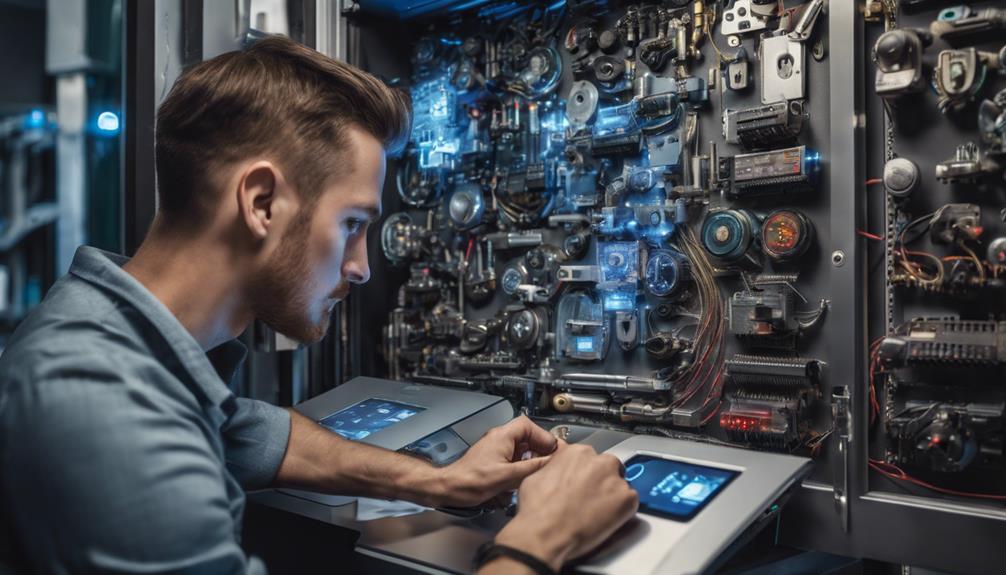
To identify upgrade opportunities in your security system, start by evaluating your current security measures to pinpoint vulnerabilities. Next, assess new technology options that can enhance your system's effectiveness and efficiency. This systematic approach guarantees you make informed decisions that bolster your overall security. Locksmiths can provide valuable insights Enhancing Business Security With Expert Locksmith Insights during this process, offering recommendations tailored to your specific business needs.
Assessing Current Security Measures
Regularly evaluating your current security measures is essential for identifying potential upgrade opportunities. Conducting thorough security evaluations and risk assessments allows you to pinpoint vulnerabilities that could be exploited. Start by analyzing three critical aspects:
- Access Control: Assess how effectively your current locks and entry systems limit unauthorized access. For example, outdated locks can pose a significant security risk, as highlighted in Enhancing Business Safety Through Security Audits.
- Surveillance: Examine the adequacy of your surveillance systems; outdated cameras may not provide the coverage or clarity needed.
- Response Protocols: Evaluate your emergency response protocols and verify they align with the latest best practices.
Evaluating New Technology Options
Identifying gaps in your current security measures opens the door to exploring advanced technology options that can greatly enhance protection. Start by researching emerging trends in security technology, such as biometric access controls, smart surveillance systems, and integrated alarm solutions. Additionally, consider the benefits of implementing biometric systems and smart technology solutions to bolster your commercial space's security measures.
Next, evaluate technology compatibility; verify that new products can seamlessly integrate with your existing infrastructure. This may involve consulting with experts to determine potential issues or necessary upgrades.
Don't underestimate the power of leveraging cutting-edge solutions to fortify your business's defenses. By proactively analyzing and implementing these strategies, you position yourself at the forefront of security advancements, guaranteeing a robust protective environment tailored to your needs.
Repairing Existing Security Components
To guarantee your security system functions at its best, you need to identify existing weaknesses in its components. Consider your options for replacing any damaged parts and recognize the importance of routine maintenance to prevent future issues. Addressing these factors will enhance the overall security of your premises.
Identifying Security Weaknesses
Many homeowners overlook the importance of evaluating their existing security components, which can lead to vulnerabilities. Conducting regular security audits is essential for identifying areas of weakness and guaranteeing your system meets current technology trends. Here are three critical aspects to assess:
- Access Points: Examine doors and windows for outdated locks or gaps that can be exploited.
- Surveillance Systems: Verify cameras are functioning correctly and cover all necessary angles without blind spots.
- Alarm Systems: Check for proper installation and integration with modern technology to prevent false alarms.
Component Replacement Options
When evaluating your security system, consider the replacement options for outdated or damaged components to enhance overall safety. Prioritizing component compatibility is essential; mismatched parts can lead to vulnerabilities and operational failures. Evaluate whether existing hardware can support new technology, as this will determine the feasibility of upgrades.
Installation challenges may arise when integrating newer components with older systems, requiring professional assessment to guarantee seamless functionality. A locksmith can guide you through selecting parts that not only fit but also elevate your security posture. By investing in compatible, high-quality components, you'll not only repair but also fortify your system against potential threats, ensuring your business remains secure and resilient in an ever-evolving landscape.
Routine Maintenance Importance
Upgrading security components is only part of an extensive strategy; routine maintenance plays an essential role in guaranteeing your system remains effective. Regularly scheduled maintenance can prevent minor issues from escalating into major vulnerabilities. Implementing proactive maintenance practices guarantees your security system functions at its best.
Consider these key actions:
- Routine Inspections: Regular checks can identify wear and tear before they compromise security.
- Component Testing: Evaluating the performance of locks and alarms guarantees reliability when needed most.
- Software Updates: Keeping your security software current protects against evolving threats.
Integrating New Technologies
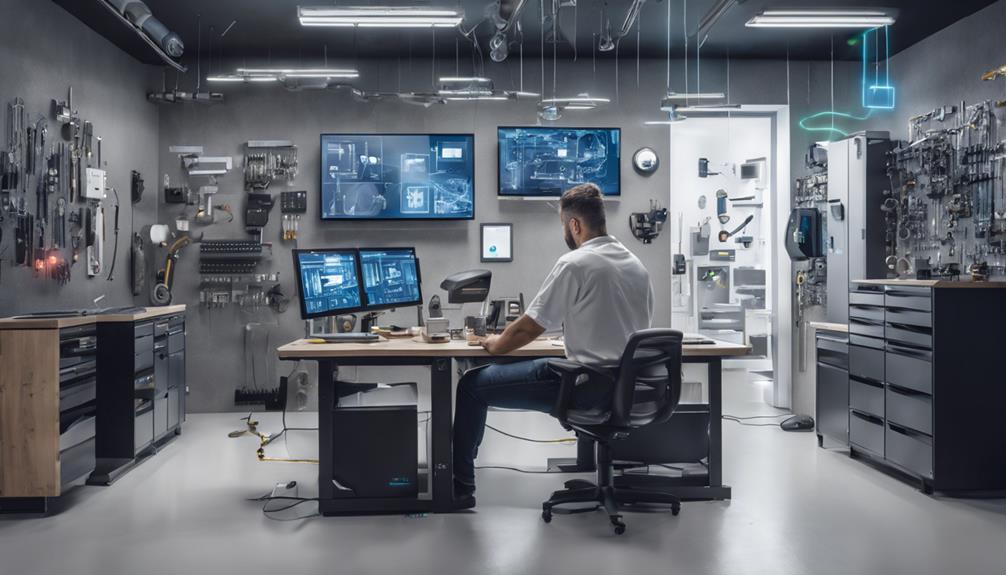
Integrating new technologies into locksmith security systems can markedly enhance your overall safety and efficiency. Smart locks offer advanced access control, allowing you to manage entry points with ease. By incorporating biometric systems, you can guarantee that only authorized personnel gain access, elevating security standards. Cloud integration provides seamless data management, while surveillance cameras enable real-time monitoring. Utilizing mobile apps empowers you to control your security system remotely, enhancing convenience. Security automation coupled with wireless technology streamlines your operations, making it easier to maintain security protocols. Remote monitoring capabilities guarantee you stay informed of any breaches, while data encryption safeguards sensitive information from unauthorized access. These integrations position your business at the forefront of modern security solutions, providing both control and peace of mind. Additionally, with the rise of smart keyless entry systems enhancing security and convenience, businesses can further optimize their security measures.
Benefits of Upgrading Security Systems
Upgrading your security system offers a range of benefits that can greatly bolster your safety and operational efficiency. By investing in modern technology, you can experience:
- Cost Savings: New systems often reduce energy consumption and maintenance costs, providing long-term value. For multi-site businesses, standardizing security systems can streamline security processes and minimize overall expenses.
- Enhanced Safety: Advanced features improve risk mitigation, ensuring your premises are better protected against threats.
- Increased Efficiency: User-friendly interfaces streamline operations, allowing for quicker response times and less downtime.
Additionally, improved reliability fosters customer assurance, reassuring clients that their safety is prioritized. Technological advancements keep your system robust, adapting to evolving threats. Embracing these upgrades not only secures your assets but also positions your business as a forward-thinking leader in the industry.
Choosing the Right Locksmith
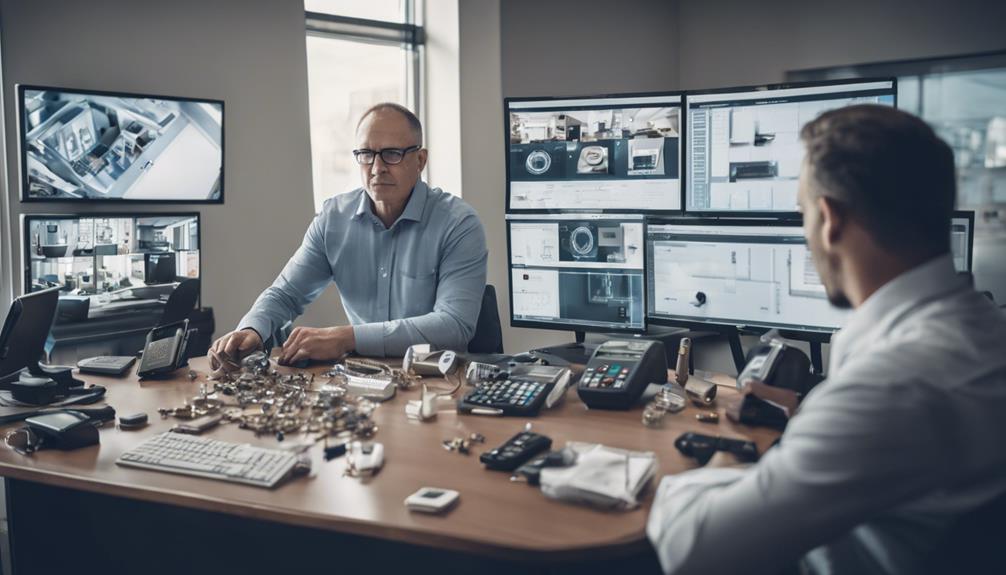
When selecting a locksmith, it is crucial to take into account their qualifications and reputation to guarantee you're making a safe choice. Start by verifying their certifications and training in the latest security technologies. A qualified locksmith should demonstrate proficiency in integrating and upgrading existing security systems, such as upgrading to new technology for enhanced security measures. Next, scrutinize customer reviews; they offer insights into the locksmith's reliability and service quality. Look for patterns in feedback—consistent positive reviews indicate a professional who values client satisfaction. Additionally, consider their experience with businesses similar to yours, as specific industry knowledge can be invaluable. Ultimately, your choice of locksmith should reflect a balance of technical expertise and proven customer service, ensuring your security needs are effectively met.
Low Rate Locksmith Services
In today's competitive market, low-rate locksmith services can be tempting for those looking to save on security solutions. However, choosing affordable locksmiths requires careful consideration. Here are three key factors to evaluate:
- Quality of Service: Confirm that the locksmith's services meet industry standards, even at budget-friendly prices.
- Experience and Credentials: Verify the locksmith's background, as less experienced technicians may compromise your security.
- Warranty and Support: Look for services that include guarantees and ongoing support to safeguard your investment.
While low-rate options may seem attractive, remember that cutting corners on security can lead to vulnerabilities. Prioritize quality and reliability, and invest wisely in a locksmith who can integrate advanced technology into your existing system.
Maintaining Your Upgraded Systems
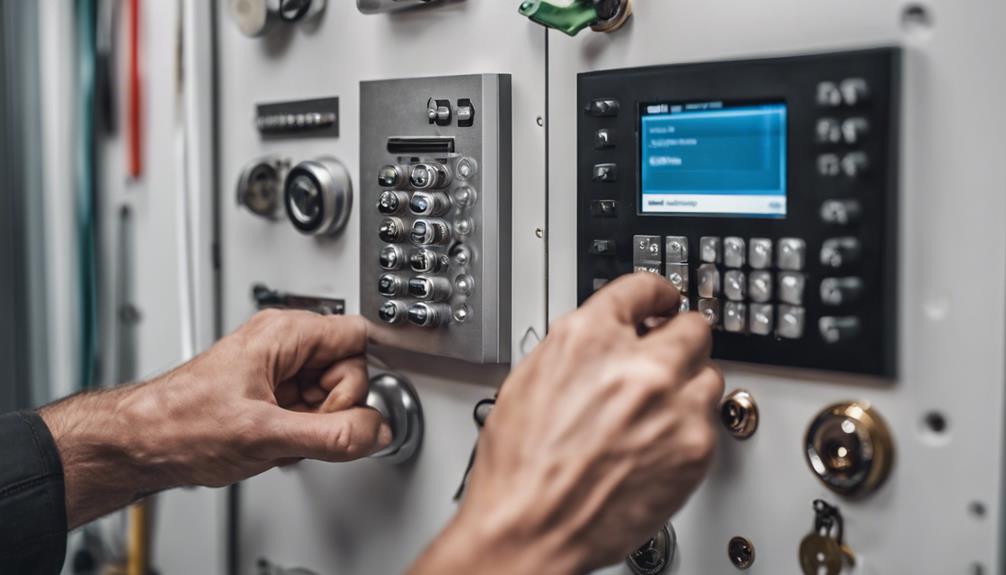
After selecting a reliable locksmith and implementing an upgraded security system, ongoing maintenance becomes essential to guarantee its effectiveness. Regular inspections, such as those offered through Affordable Commercial Lock Maintenance Programs, confirm that all components function at their best, directly impacting system longevity. Schedule routine check-ups to identify and rectify potential vulnerabilities before they escalate into significant issues.
Additionally, user training plays an important role in maintaining security integrity. Equip your staff with the knowledge to operate the system correctly, emphasizing the importance of adhering to protocols. This proactive approach not only enhances security but also cultivates a culture of awareness among employees.
Ultimately, a commitment to maintenance and user education empowers you to safeguard your assets, making sure your upgraded security system remains robust and effective against evolving threats.

